NIMBioS Calendars: Events Seminars Live Streaming Visitors Working Groups Workshops Tutorials Other
2016 Archive: NIMBioS Seminars
 In conjunction with the interdisciplinary activities of the National Institute for Mathematical and Biological Synthesis (NIMBioS), a seminar series on topics in mathematical biology is hosted at NIMBioS every other Tuesday at 3:30 p.m. (unless otherwise noted) in Hallam Auditorium, Room 206, Claxton Building, 1122 Volunteer Blvd.
Seminar speakers focus on their research initiatives at the interface of mathematics and many areas of the life sciences. Light refreshments are served in the 1st floor visitor breakroom beginning 30 minutes before each talk. Faculty and students from across the UT community are welcome to join us.
In conjunction with the interdisciplinary activities of the National Institute for Mathematical and Biological Synthesis (NIMBioS), a seminar series on topics in mathematical biology is hosted at NIMBioS every other Tuesday at 3:30 p.m. (unless otherwise noted) in Hallam Auditorium, Room 206, Claxton Building, 1122 Volunteer Blvd.
Seminar speakers focus on their research initiatives at the interface of mathematics and many areas of the life sciences. Light refreshments are served in the 1st floor visitor breakroom beginning 30 minutes before each talk. Faculty and students from across the UT community are welcome to join us.
Video Archive of NIMBioS Seminars
Archived Seminar Calendars:
2020
2019
2018
2017
2016
2015
2014
2013
2012
2011
2010
2009
NIMBioS Spring 2016 Interdisciplinary Seminar Series: Printable Flyer
Seminar Abstracts:
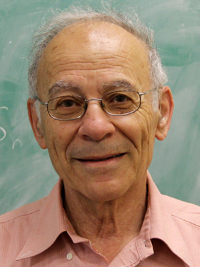 Time/Date: 3:30 Tuesday, December 6
Time/Date: 3:30 Tuesday, December 6Location: Hallam Auditorium, Room 206, Claxton Building, 1122 Volunteer Blvd.
Speaker: Avner Friedman, Mathematics and Physical Sciences, Ohio State Univ.
Topic: Tuberculosis and the immune system
Abstract: The lung encounters frequent challenges from inhaled particulates and microbes. The latter includes intracellular pathogens, such as M. tuberculosis (Mtb). When the immune response is unable to eradicate the pathogen, a collection of immune cells surround and isolate the pathogen, forming a structure called granuloma. In this talk I will describe a mathematical model of granuloma in Mtb, and use the model to explore the efficacy of potential drugs. It will be shown that the amount of drug can be reduced for individuals with strong immune systems. Some mathematical analyses of simplified models will be described. Click here for more information. Seminar flyer (pdf).
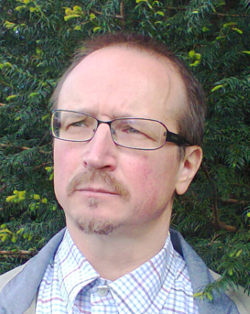 Time/Date: 3:30 Tuesday, November 8
Time/Date: 3:30 Tuesday, November 8Location: Hallam Auditorium, Room 105, Claxton Building, 1122 Volunteer Blvd.
Speaker: Sergei Petrovskii, Mathematics, Univ. of Leicester
Topic: Biological invasion: Patchy invasion as a new paradigm of alien species spread
Abstract: Biological invasion can be generically defined as the uncontrolled spread and proliferation of species to areas outside of their native range, hence called alien, usually following their unintentional introduction by humans. A conventional view of the alien species spatial spread is that it occurs via the propagation of a travelling "population front." In a realistic 2D system, such a front normally separates the invaded area behind the front from the uninvaded areas in front of the front. There is, however, an alternative scenario called "patchy invasion" where the spread takes place via the spatial dynamics of separate patches of high population density with a very low density between them, and a continuous population front does not exist at any time. Patchy invasion has often been observed in nature (perhaps the most well-known case is the gypsy moth spread), and it has been studied theoretically in much detail using diffusion-reaction models. However, diffusion-reaction models have many limitations; in particular, they almost completely ignore the so-called long distance dispersal (usually associated with the movement pattern known as Levy flights). Correspondingly, I will then present some recent results showing that patchy invasion can occur as well when long distance dispersal is taken into account. In this case, the system is described by integral-difference equations with fat-tailed dispersal kernels. I will also show that apparently minor details of kernel parametrization may have a relatively strong effect on the rate of species spread. I will complete my talk with a discussion of implications of the patchy invasion and remaining challenges in its understanding, with a special focus on possible evolutionary strategies that may result in the patchy spread. Click here for more information. Seminar flyer (pdf).
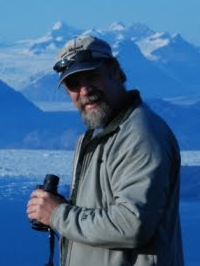 Time/Date: 3:30 Tuesday, October 18
Time/Date: 3:30 Tuesday, October 18Location: Hallam Auditorium, Room 206, Claxton Building, 1122 Volunteer Blvd.
Speaker: Jay Ver Hoef, National Marine Mammal Laboratory, NOAA-NMFS Alaska Fisheries Science Center; NIMBioS Postdoctoral Fellows Invited Distinguished Visitor
Topic: Modern spatial statistics: Basis functions, convolutions, and big data
Abstract: Since inception, spatial statistics has been plagued by computational constraints. The central problem is inversion of the covariance matrix, which is an n-cubed problem, which is only compounded by the increased interest in Bayesian hierarchical models that use Markov chain Monte Carlo methods. I will describe a popular trend lately to reparameterize spatial models as linear mixed models where the random-effects design matrix is reduced rank and composed of basis functions. There are interesting connections to spline models and moving average approaches (convolutions) that integrate kernels over white noise. The spatial basis approach allows implementation of models for large data sets and for developing dependence structures for complex topologies. I recount how these approaches became popular from early developments by Barry and Ver Hoef (1996), Higdon (1998), and Wikle and Cressie (1999). I illustrate the new methods with two cases: developing spatial abundance models for count data, and novel spatial models for data collected from stream networks. Click here for more information. Seminar flyer (pdf).
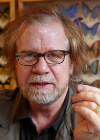 Time/Date: 3:30 Tuesday, October 11
Time/Date: 3:30 Tuesday, October 11Location: Hallam Auditorium, Room 206, Claxton Building, 1122 Volunteer Blvd.
Speaker: Mark W. Moffett, National Museum of Natural History
Topic: How a shift in social identity made enormous societies possible: An overlooked turning point in human evolution
Abstract: Human societies are examined as distinct and coherent groups. In the societies of most other vertebrates, each member must recognize every other member as an individual. This typically limits societies to 100 members, and never more than 200. Numerous and diverse identity labels substitute for such knowledge in humans, and were necessary before our societies could grow more populous. How did a capacity for using societal labels arise? The rule of parsimony indicates that, at least as far back as their divergence from the chimpanzee line, our ancestors would have never lived in strict family groups or in any other compact societies offering regular face-to-face interaction. Nor did they form open networks. They were fission-fusion species that evolved, by simple steps, from having societies bounded by the recognition of individuals to societies differentiated by labels. I propose that this transition, ignored before now, occurred well before language by a simple shift in signals resembling those employed by chimpanzees. Free from usual size limits, societies at first reached into the multiple hundreds. Agriculture would permit societies to grow larger still, in part through the improved stabilization of labels within settled communities. This lecture expands upon the author's review in the September 2013 issue of Human Nature: Human Identity and the Evolution of Societies. Click here for more information. Seminar flyer (pdf).
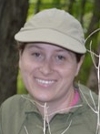 Time/Date: 3:30 Tuesday, October 4
Time/Date: 3:30 Tuesday, October 4Location: Hallam Auditorium, Room 206, Claxton Building, 1122 Volunteer Blvd.
Speaker: Lauren Smith-Ramesh, NIMBioS postdoctoral fellow (Oct 2016)
Topic: Placing species invasions in a food web context: A new twist on old invasion hypotheses
Abstract: A core goal of invasion ecology is to identify the factors that drive species invasions. A few dominant hypotheses have surfaced to explain why invaders succeed, including the 'enemy escape hypothesis,' which purports that invaders suffer reduced damage from natural enemies relative to natives. However, empirical support for enemy escape is mixed. Placing our study of invasion in a more complete food web context (beyond two trophic levels) may help to explain why this hypothesis often fails. Through theoretical and empirical case studies of invasive plants in Eastern deciduous forests of the United States, I consider how food web context can inform our understanding of species invasions. Then, I present a global synthesis that examines how food web complexity interacts with invasion success across habitats. By considering invasion in the context of broader food-web interactions, we can explain why common hypotheses such as enemy escape often fail, while gaining new power to explain global patterns of species invasions. Click here for more information. Seminar flyer (pdf).
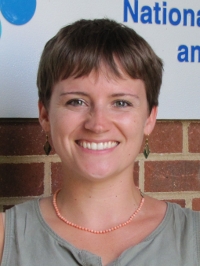 Time/Date: 3:30 Tuesday, September 20
Time/Date: 3:30 Tuesday, September 20Location: Hallam Auditorium, Room 206, Claxton Building, 1122 Volunteer Blvd.
Speaker: Sarah Flanagan, NIMBioS postdoctoral fellow
Topic: Identifying signatures of selection on the genome: case studies using pipefish
Abstract: Understanding the genetic basis of complex traits is one of the major goals of evolutionary biology. Population genetics, which focuses on genetic variation within and among populations, is one way to approach understanding the genetic basis of evolutionarily relevant traits by differentiating between signatures of neutral processes (e.g. migration and drift) and selective pressures. In this talk, I will discuss various approaches to identifying signatures of selection in the context of next-generation sequencing studies, as well as some of their challenges and constraints when applied to actual datasets. Specifically, I will focus on traditional population genetics approaches to identifying signatures of selection among populations, such as FST outlier scans, as well as selection components analysis, a method that compares allele frequencies among individuals within a single population to identify signatures of selection. Throughout the talk, I will include results from empirical studies of natural populations of the Gulf pipefish, a marine fish characterized by male pregnancy and sex-role-reversal. Click here for more information. Seminar flyer (pdf).
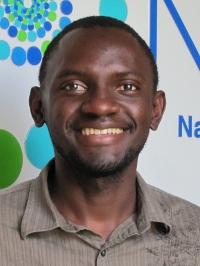 Time/Date: 3:30 Tuesday, September 6
Time/Date: 3:30 Tuesday, September 6Location: Hallam Auditorium, Room 206, Claxton Building, 1122 Volunteer Blvd.
Speaker: Nourridine Siewe, NIMBioS postdoctoral fellow
Topic: Granuloma formation in leishmaniasis: A mathematical model
Abstract: Leishmaniasis is a disease caused by protozoan parasites of the genus Leishmania. The two common forms of leishmaniasis are cutaneous leishmaniasis (CL) and visceral leishmaniasis (VL). VL is the more severe of the two and, if untreated, may become fatal. The hallmark of VL is the formation of granuloma in the liver or the spleen. In this talk, I present a mathematical model of the evolution of granuloma in the liver. The model is represented by a system of partial differential equations and it includes immigration of cells from the adaptive immune system into the granuloma; the rate of the influx is determined by the strength of the immune response of the infected individual. It is shown that parasite load decreases as the strength of the immune system increases. Furthermore, the efficacy of a commonly used drug, which increases T cell proliferation, increases in a person with stronger immune response. The model also provides an explanation of why, in contrast to humans, mice recover naturally from VL in the liver. Click here for more information. Seminar flyer (pdf).
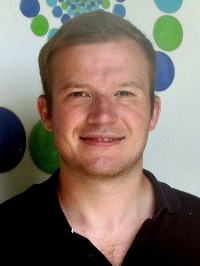 Time/Date: 3:30 Tuesday, August 23
Time/Date: 3:30 Tuesday, August 23Location: Hallam Auditorium, Room 206, Claxton Building, 1122 Volunteer Blvd.
Speaker: Sergei Tarasov, NIMBioS postdoctoral fellow
Topic: Systematics of dung beetles (Coleoptera: Scarabaeidae: Scarabaeinae) and ontology-informed models for phenotypic evolution
Abstract: The first and main part of my talk will be focused on the systematics and phylogenetics of dung beetles. Dung beetles are a globally distributed group of insects that comprises ˜6200 species feeding mainly on mammalian excrements. Additionally, dung beetles are popular model organisms in ecology and evo-devo; for the last two decades they have experienced a systematics renaissance with the adoption of modern phylogenetic approaches. Numerous studies produced contradictory trees leading to the lack of consensus on their evolutionary history. In my research, I revisit the phylogenetics and attempt to revise the classification of dung beetles through the acquisition of global morphological and molecular datasets. To improve phylogenetic inference, I employ novel approaches that use Bayesian posterior prediction for selecting data partitions in molecular analysis and partitioning of morphological matrices using anatomy ontologies. Both the molecular and morphological datasets yield generally consistent results, which provide new insight into relationships and suggest a new classification for dung beetles. The second part of my talk will be devoted to my ongoing postdoctoral project focused on modeling phenotypic evolution. The dependencies among body parts in organisms evolve during the course of evolution, yet the current comparative phylogenetic methods generally operating with a single character ignore them. These anatomical dependencies can be represented as a tree graph, which is allowed to evolve over phylogenetic tree as a single complex unit. The application of such framework enables mapping evolution of the entire phenotype and addressing questions on the evolutionary novelties and adaptive dynamics of morphology. Since this project is in initial stage, I will mainly explore underlying concepts and its potential application.
Click here for more information. Seminar flyer (pdf).
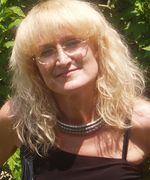 Time/Date: 3:30 Tuesday, April 19
Time/Date: 3:30 Tuesday, April 19Location: Hallam Auditorium, Room 206, Claxton Building, 1122 Volunteer Blvd.
Speaker:Urszula Ledzewicz, Mathematics and Statistics, Southern Illinois Univ., Edwardsville, and Lodz Univ. of Technology, Poland; NIMBioS Postdoctoral Fellows Invited Distinguished Visitor
Topic: Optimal protocols for combination therapies in cancer: How much, how often, in what sequence? Joint research with Heinz Schaettler (Washington Univ., St. Louis, USA).
Abstract: The questions "how much, how often, and in what sequence" anticancer drugs should be given to secure an optimal outcome are essential and far from being answered yet. Also, simple answers are not always the best ones. Actually, there is mounting medical evidence that "more is not necessarily better" and a properly calibrated dose which takes into account this complexity can lead to a better outcome. This has generated a search for what is called the biologically optimal dose (BOD) in the medical literature. Formulating mathematical models with an objective that reflects the overall goal of the therapy, like minimizing the tumor size and side effects, maximizing the actions of the immune system etc., leads to optimal control problems where mathematical analysis can answer some of these questions in a theoretical framework. In this talk, we present some of these problems, addressing challenges and open questions. The results of the analysis will be compared with medical and experimental data. Click here for more information.
Seminar flyer (pdf).
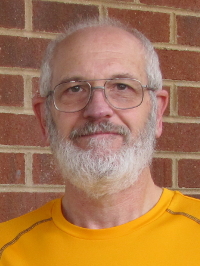 Time/Date: 3:30 Thursday, April 14
Time/Date: 3:30 Thursday, April 14Location: Hallam Auditorium, Room 206, Claxton Building, 1122 Volunteer Blvd.
Speaker: Glenn Ledder, Mathematics, Univ. of Nebraska, Lincoln; NIMBioS Sabbatical Fellow
Topic: Allocation of resources in two-component systems
Abstract: How plants allocate resources towards different functions, such as light-absorption by shoots versus nutrient and water-absorption by roots, is a critical determinant of their growth and survival. Yet, the mechanisms underlying such differential allocation in heterogeneous environments are unknown. It is generally thought that plants allocate resources to achieve optimal growth, but this would require central planning, a capacity that plants are unlikely to have. An alternative hypothesis is that differential allocation is accomplished through local allocation rules operating independently in roots and shoots, with each of these components acting selfishly, as happens in obligate syntrophy. We describe a simple model for a plant as a system of "roots" and "shoots" that collect "carbon" and "nitrogen," respectively. Nitrogen collected by roots is sent directly to a root synthesizing unit to be combined with carbon into new root tissue. Any excess (unused) nitrogen is passed from the roots to the shoots. Similarly, carbon collected by shoots goes to the shoot synthesizing unit, with any excess sent to the roots. Analysis shows that this selfish allocation protocol manages to yield patterns consistent with those generated by a model of optimal plant growth, for synthesizing unit models defined with both a simplified Liebig minimum rule and a more realistic co-limitation model. Click here for more information. Seminar flyer (pdf).
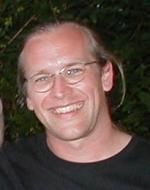 Time/Date: 3:30 Tuesday, April 12
Time/Date: 3:30 Tuesday, April 12Location: Hallam Auditorium, Room 206, Claxton Building, 1122 Volunteer Blvd.
Speaker: Michael Whitlock, Zoology, Univ. of British Columbia, Vancouver; NIMBioS Postdoctoral Fellows Invited Distinguished Visitor
Topic: Selection in complex spatial settings
Abstract: The fact that the individuals in each species are spread over space with limited dispersal means that evolutionary processes are all to some extent local. In this talk I will discuss some ways in which the basic processes of evolution—especially selection and drift—are substantially changed by their spatial context. In spatially structured populations (compared to the panmictic populations that are better studied), deleterious alleles are likely to be more effectively removed by selection at equilibrium. In contrast, in non-equilibrium populations expanding over space, deleterious alleles can reach locally high frequencies through allelic surfing. The "expansion load" that results can be a substantial burden on the mean fitness of a population. I will explore the interaction between deleterious mutations and spatially heterogeneous selection in determining the rate of population range expansion and the amount of genetic load that results. Click here for more information. Seminar flyer (pdf).
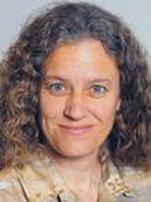 Time/Date: 3:30 Tuesday, March 29
Time/Date: 3:30 Tuesday, March 29Location: Hallam Auditorium, Room 206, Claxton Building, 1122 Volunteer Blvd.
Speaker: Alison G. Power, Ecology and Evolutionary Biology, Cornell Univ.
Topic: From landscapes to coinfections: Plant virus epidemiology at multiple scales
Abstract: Infections of a single host by multiple pathogens are common in nature but relatively poorly studied compared to single infections. In this talk I will discuss the causes and consequences of coinfection by insect-transmitted plant viruses in two systems: 1) the multiple species of barley/cereal yellow dwarf viruses (B/CYDVs) infecting wild grasses across Western US grasslands; and 2) the multiple strains of potato virus Y infecting potatoes and other solanaceous plants on farms in upstate New York. Our research is addressing the drivers of virus emergence and spread at multiple scales, including the landscape, the field, and within individual host plants. I will present data on the influence of landscape structure, vector community composition, transmission dynamics, and within-host processes on the epidemiology of these aphid-transmitted viruses. Click here for more information. Seminar flyer (pdf).
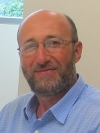 Time/Date: 3:30 Tuesday, March 22
Time/Date: 3:30 Tuesday, March 22Location: Hallam Auditorium, Room 206, Claxton Building, 1122 Volunteer Blvd.
Speaker: Alex Mogilner, Mathematics and Biology, Courant Institute; Biology, New York Univ.
Topic: Mechanical pathways of cell polarization and motility initiation
Abstract: Animal cells move using a polarized dynamic actomyosin network adhering to the surface. While mechanics of motility based on actin protrusion at the front and myosin contraction at the rear are understood fairly well, explanation of spontaneous polarization remains elusive. I will present simulations of a 2D model of a viscous contractile actin-myosin network with a free boundary which, coupled with experimental data, suggests that a positive feedback between myosin aggregation and actin flow and a negative feedback between flow and stick-slip adhesion is the key to understanding self polarization of fish epithelial keratocytes. The model predicts, and experiments confirm, that upregulating myosin accelerates the polarization. On the other hand, epithelial IAR-2 cells self-polarize faster if myosin is inhibited. In that case, combined experiment and theory point out that competition of protruding and contracting actin networks for a common actin pool, coupled with cell movement, is the key to the self-polarization. I will discuss implications of these findings for design principles of cellular self-organization. Click here for more information. Seminar flyer (pdf)
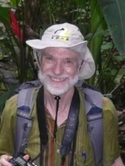 This seminar has been canceled.
This seminar has been canceled.Time/Date: 3:30 Tuesday, March 8
Location: Hallam Auditorium, Room 206, Claxton Building, 1122 Volunteer Blvd.
Speaker: Peter Chesson, Ecology and Evolutionary Biology, Univ. of Arizona, and NIMBioS Postdoctoral Fellows Invited Distinguished Visitor
Topic: Diversity maintenance: New concepts and theory for communities as multiple-scale entities
Abstract: Current approaches to community assembly, species coexistence, and the maintenance of biodiversity focus on the coexistence of species on small areas of habitat, which are assumed to support self-sustaining biological communities. The local communities on these areas are assumed to be assembled from the regional set of species according to local environmental conditions and interactions between species. However, local communities are not natural ecological entities in most cases, but are defined more by convenience for study. In general, local communities are affected by immigration on ecological time scales, and so do not satisfy the requirements for most theories of coexistence and diversity maintenance. For any given unit of space on a given scale, scale transition theory reveals how much diversity can be explained by processes taking place within that unit of space compared with contributions from other spatial units or other scales. I use scale transition theory to show how the joint contributions of multiple mechanisms of coexistence can be studied. These mechanisms include point mechanisms, such as resource partitioning, spatial mechanisms such as the spatial storage effect and fitness-density covariance, and temporal mechanisms such as the temporal storage effect. This multi-scale community theory removes the artificial distinction between the local community and the species pool. Instead, it shows how the species pool and the local community are mutually dependent, with scale-dependent properties. The measures of mechanism strength from scale transition theory can be operationalized for field and experimental studies, and provide rigorous approaches to the study of coexistence in natural communities as multiple scale entities. Click here for more information. Seminar flyer (pdf).
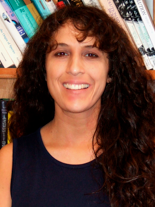 Time/Date: 3:30 p.m. Tuesday, February 16
Time/Date: 3:30 p.m. Tuesday, February 16Location: Hallam Auditorium, Room 206, Claxton Building, 1122 Volunteer Blvd.
Speaker: Maria Servedio, Biology, Univ. of North Carolina; Handling Editor, Evolution
Topic: Models and mechanisms of male mate choice
Abstract: Male mate choice in polygynous systems differs from female mate choice in fundamental ways. Mathematical models of the process uncover a hidden competition cost that makes the evolution of male preferences very difficult. I will first present a null model that pinpoints this cost. I will then explore three categories of mechanisms that would seem to have the potential to allow male preferences to evolve despite this cost: characteristics of the female trait, characteristics of the male behavior, and alterations of the mating system. Click here for more information. Seminar flyer (pdf).
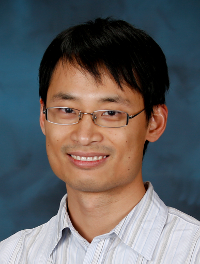 Time/Date: 3:30 p.m. Tuesday, January 19
Time/Date: 3:30 p.m. Tuesday, January 19Location: Hallam Auditorium, Room 206, Claxton Building, 1122 Volunteer Blvd.
Speaker: Chongle Pan, Computer Science and Mathematics Division, Oak Ridge National Laboratory; Microbiology, Univ. of Tennessee
Topic: Characterization of microbial evolution and physiology using big omics data
Abstract: Genomics and other -omics analyses can provide large amounts of data to elucidate the evolution and physiology of microorganisms. A functional phylogenomics study was performed to characterize the evolution of metabolic functions in Bacteria and Archaea. A total of 14,727 GenBank prokaryotic genomes were re-annotated using a new protein family database, UniFam, to obtain consistent functional annotations. The consistency between the distribution of metabolic pathways in genomes and the phylogenetic tree of genomes was measured using parsimony scores and retention indices. Function-phylogeny correlation identified a set of clade-specific metabolic pathways with low parsimony scores. Many other metabolic pathways were sparsely dispersed across many clades with high parsimony scores, which indicated their frequent horizontal gene transfers. Many plant-associated fungi host symbiotic endobacteria with reduced genomes. We integrated proteomics and metabolomics to characterize the endobacterium Candidatus Glomeribacter sp. and the root endophytic fungus Mortierella elongata. The endobacterium likely extracted malate from the fungal host as the primary carbon substrate for energy production and biosynthesis. Further, nitrogen limitation significantly perturbed the carbon and nitrogen flows in the fungal metabolic network. M. elongata regulated many pathways by concordant changes on enzyme abundances, post-translational modifications, reactant concentrations, and allosteric effectors. Such multimodal regulations may be a general mechanism for metabolic modulation. Click here for more information. Seminar flyer (pdf).
NIMBioS
1122 Volunteer Blvd., Suite 106
University of Tennessee
Knoxville,
TN 37996-3410
PH: (865) 974-9334
FAX: (865) 974-9461
Contact NIMBioS


